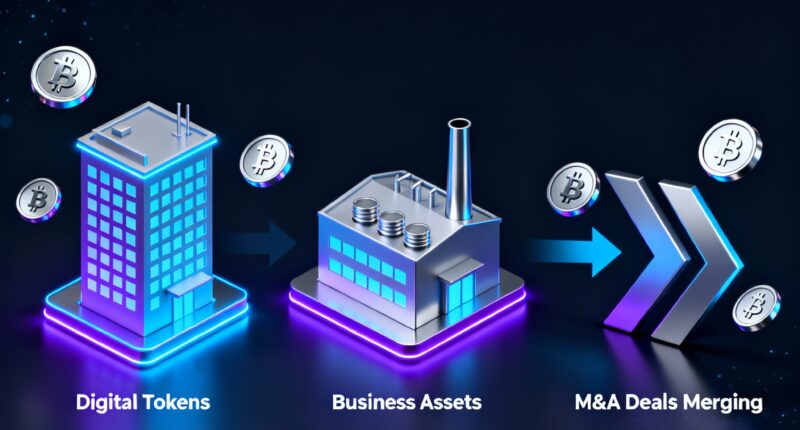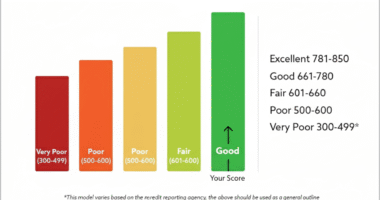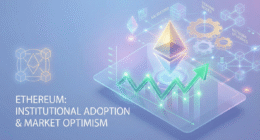Tokenization is rapidly transforming global finance and the landscape for mergers and acquisitions (M&A), driving new approaches to asset management, deal funding, and investment participation in 2025. This article explores the rise of tokenization—its impact on asset classes, the evolution of M&A funding, and how these trends are reshaping markets worldwide.
Tokenization’s Rise: Reshaping Assets and Markets
Explosive Growth and Key Drivers
Tokenization refers to converting traditional assets—like real estate, private credit, equities, and commodities—into digital tokens on a blockchain, enabling fractional ownership and streamlined transactions. In 2025, the real-world asset (RWA) tokenization market reached $1.24 trillion, up 43% year-on-year, with projections as high as $30 trillion by 2034. Major financial players such as Goldman Sachs, BNY Mellon, and BlackRock have launched institutional tokenization projects, while money-market and Treasury fund tokenized assets surged 80% to $7.4 billion.coinlaw+2
Critical drivers for tokenization include:
-
Improved liquidity: Tokenization creates a liquid market for previously illiquid assets.
-
Fractional ownership: Investors can buy small portions of assets.
-
Faster settlement: Blockchain-based transactions settle in minutes versus days.weforum+1
-
Cross-border efficiency: Global investing is simplified.
Despite regulatory challenges and the need for robust infrastructure, tokenization is moving from experimentation to mainstream adoption, with over 200 institutional projects and $65 billion in TVL recorded in 2025.linkedin+1
M&A Funding Changes: Private Credit, Tokenized Financing, and Deal Structure Evolution
Shifting Deal Dynamics in 2025
M&A funding in 2025 is marked by resilience in deal values and creative structures despite subdued volumes, as higher interest rates and tighter liquidity drive innovation. Key trends include:ogier+2
-
Rise of private credit: With traditional syndicated loans and high-yield bonds less reliable, private credit providers offer faster, more confidential, and execution-certain funding for deals.ogier
-
Multi-tranche solutions: Deals increasingly feature hybrid instruments—toggle notes, preferred equity, and club deals—to hedge risks and match investor profiles.ogier
-
Currency flexibility: Buyers are layering sterling, euro, and dollar debt to attract diverse investors.
Financing reliability now outweighs cost, with sponsors paying premiums to guarantee deal closure. Equity remains relevant for stock-for-stock mergers, but debt efficiency is increasingly important.ogier
Tokenization’s Impact on M&A
Tokenization is revolutionizing M&A transactions by:
-
Simplifying asset and collateral management: Tokenized assets are easier to value, transfer, and use as collateral, reducing illiquidity and improving transparency.harpalis+1
-
Streamlining the M&A process: Automated, blockchain-based workflows allow instant asset transfers, secure stakeholder collaboration, and real-time data sharing—eliminating bottlenecks.meegle+1
-
Increasing liquidity and accessibility: More buyers and sellers can engage in deals via fractionalized tokenized shares, democratizing M&A opportunities.siliconluxembourg+1
Challenges remain around regulatory clarity, technical integration, and stakeholder education, but industry leaders and regulators continue to push for solutions to unlock tokenization’s full potential.coinlaw+2
Conclusion
Tokenization is expected to fundamentally transform finance, M&A, and investment by 2030, with multi-trillion-dollar markets predicted. The digital shift improves liquidity, efficiency, and access, while M&A funding adapts through private credit, innovative deal structures, and blockchain-powered transactions. As adoption accelerates, tokenization stands ready to reshape how assets are owned and how deals are done.meegle+2










4 comments
Thank you.
Thanks for sharing knowledge 🌼🍁
Didn’t expect that much of tokenization with impact on investment market. Will have to wait & see in five years according to the article.
Thanks.